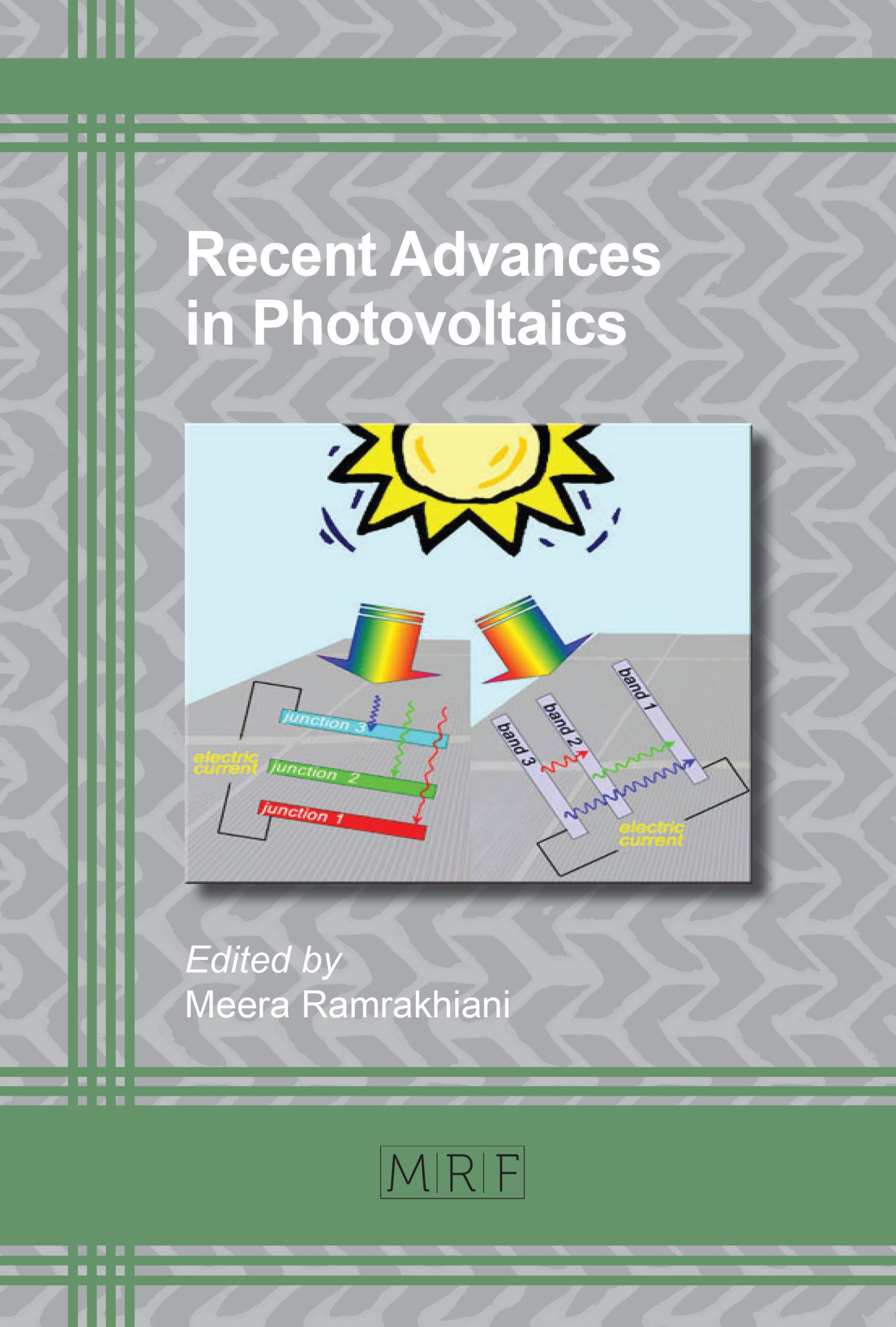Studies on the photovoltaic effect of CdSe based nanocrystalline multilayered photoelectrodes in photoelectrochemical solar cells
Hemraj Waxar, M. Ramrakhiani, P. Singh
The use of nanostructures in solar cells may enhance the efficiency and performance. In PEC cells, the junction formation is quite easy and polycrystalline films also work very well. In the present work single layered, double layered and triple layered CdSe nanocrystalline films of different crystal size have been prepared by the pulse electrodeposition method and their performance in PEC cells with sulphide/polysulphide electrolyte have been studied. The nanocrystaline CdSe films have been deposited on titanium substrate from 0.5 M CdSO4 and 0.1 M SeO2 electrolyte solution using the pulse electro-deposition method. ON-OFF machine based on IC-555 in astable mode have been used for various duty cycles. Seven samples of single layered, six samples of double layered and seven samples of triple layered CdSe nanocrystalline thin film with different duty cycle have been prepared. These were used as photoelectrode in 0.1 M NaOH, 1M Na2S, & 1M S poly-sulphide electrolyte and graphite as counter electrode. Illuminating the cell with different light intensities, I-V characteristics have been obtained and cell parameters VOC, ISC, F.F., & η% were determined. It is observed that best performance of the solar cell is obtained for the sample with duty cycle D4 of single layered, D2/3 of double layered and D2/4/6 of triple layered. The best results are obtained by the PEC solar cell with photo-anode of CdSe film prepared with duty cycle D2/3. The study reveals that nanocrystalline CdSe based photoelectrodes give better performance in PEC cells. This may be because of the larger surface area. But very small crystallites increase the surface traps and performance becomes poor. Double layered photoelecrodes give better results.
Keywords
CdSe Nanocrystals, Multilayers, Photovoltaic Effect, Photoelectrochemical Cells
Published online 8/2/2017, 28 pages
DOI: http://dx.doi.org/10.21741/9781945291371-7
Part of Recent Advances in Photovoltaics
References
[1] Matthew C. Beard, Joseph M. Luther and Arthur J. Nozik “The promise and challenge of nanostructured solar cells” Nature nanotechnology, vol 9,p-951-952,2014
[2] Oh, J., Yuan, H. C. & Branz, H. M. Nature Nanotech. 7, 743–748, 2012. https://doi.org/10.1038/nnano.2012.166
[3] Kelzenberg, M. D. et al. Nature Mater. 9, 239–244,2010. https://doi.org/10.1038/nmat2727
[4] Garnett, E. & Yang, P. Nano Lett. 10, 1082–1087,2010. https://doi.org/10.1021/nl100161z
[5] Gerischer,H.; J.Electranalyt. Chem. and Interfacial Electrochem,58, 263, 1975. https://doi.org/10.1016/S0022-0728(75)80359-7
[6] Chandra S., and Pandey R.K., Phy.Stat.Sol.(a) 59,787, 1980. https://doi.org/10.1002/pssa.2210590246
[7] Di Wei and Gehan Amaratunga, “Photoelectrochemical Cell and Its Applications in Optoelectronics” Int. J. Electrochem. Sci., 2,897 – 912, 2007.
[8] Fujishima, A., Inoue, T., Wantanabe, T. and Honda, K.; Chem. Lett.,357-360, 1978. https://doi.org/10.1246/cl.1978.357
[9] B.P. Chandra, Renewable energy source, 2008.
[10] E-C. Cho, S. Park, X. Hao, D. Song, G. Conibeer, S-C. Park, M.A. Green “Silicon quantum dot/crystalline silicon solar cells”, Nanotechnology 19, (2008)]. https://doi.org/10.1088/0957-4484/19/24/245201
[11] J. Hou and X. Guo ,W. C. H. Choy (ed.), Organic Solar Cells, Green Energy and Technology,DOI: 10.1007/978-1-4471-4823-4_2, _ Springer-Verlag London, 2013. https://doi.org/10.1007/978-1-4471-4823-4_2
[12] Butler M.A., and Ginley D.S., Review principle of photo electro chemical solar energy conversion (Review Pri. Of PEC, SE, Com.,1980.
[13] K.R. Murali, K. Trivedi, ICLA, 1994.
[14] www.Kpsec.Frecuk.com the electronic club.
[15] Penicker M.P.R., Kanster and Kroger F.A., J. Electrochm. Soc. 125, 566, 1978. https://doi.org/10.1149/1.2131499
[16] www.nature physics.com and physics@! nature.com.
[17] Fujishima,A., Kohayawa,K. and Honda, K.; J. Electrochem. Soc., 122,1437, 1975. https://doi.org/10.1149/1.2134048
[18] I- Ellise, A.B.,Kaiser, B.W. and Wrighton M.S.; J.Am. Chem. Soc., 98, 635, 1976a. II-Ellise A.B., Kaiser B.W., and Wrighton M.S. J.Phys. Chem., 80, 635, 1976b)
[19] Pandey R.K., Rooz A.J.N. and Gore R.B.; Semicond. Sci. Techno., 3, 733, 1988. https://doi.org/10.1088/0268-1242/3/8/002
[20] H.S. Hilal, Rania M.A. Ismail, A. El-Hamouz, A. Zyoud, I. Saadeddin, Electrochimica Acta, 54, 3433 2009. https://doi.org/10.1016/j.electacta.2008.12.062
































